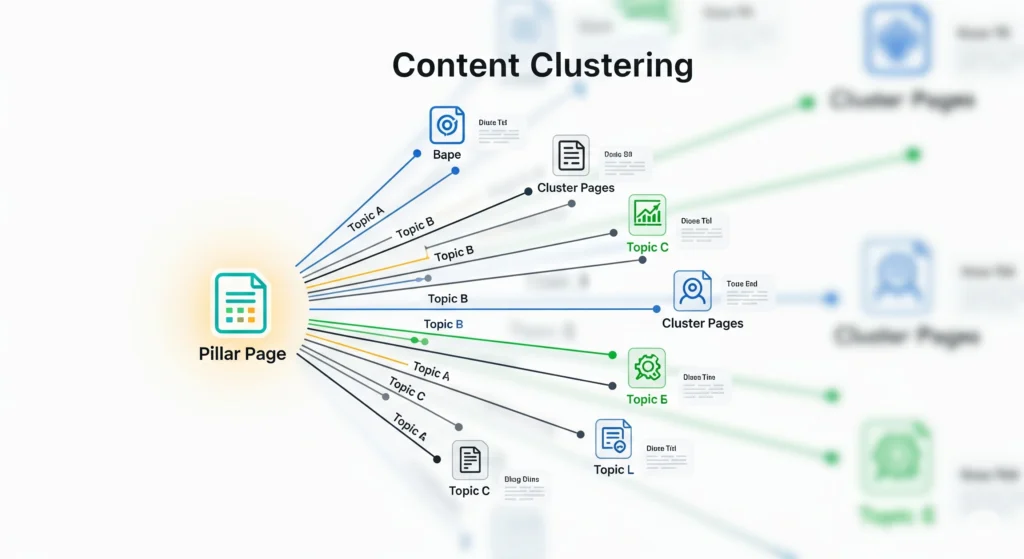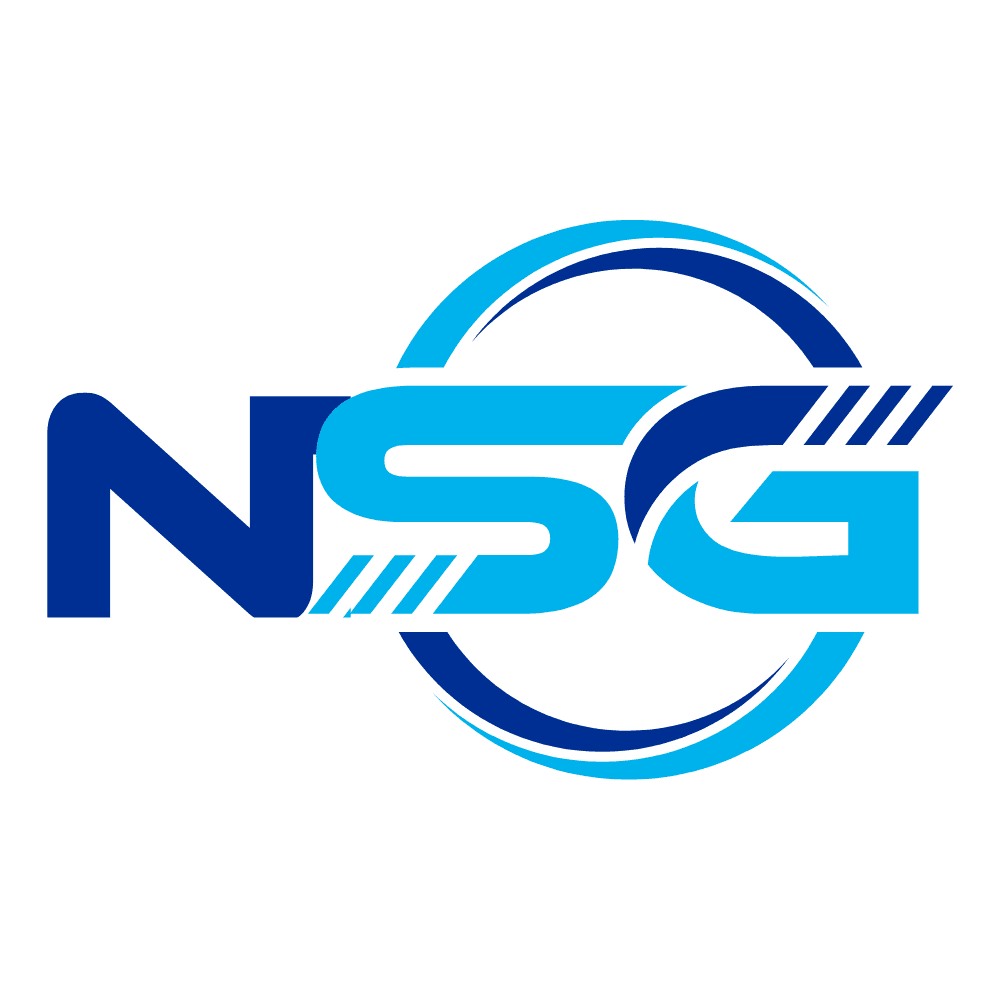You know that feeling? The one where you’ve poured your heart and soul into a blog post, hit “publish,” and… crickets?
It’s a frustrating, all-too-common reality for many of us who write online. We create great content, but it gets lost in the digital wilderness. That’s because the rules have changed. Today, it’s not just about writing a single great post; it’s about proving your authority on an entire topic.
This is where content clustering comes in. And if you’re a content creator, an SEO specialist, or a marketing manager, this is the secret weapon you’ve been missing.
What is Content Clustering (and Why It’s a Game-Changer)
Think of your website as a library. In the old days of SEO, you might have had a single, great book on a topic. Now, Google wants to see a whole section dedicated to that topic, with a main “pillar” book that introduces the subject and a dozen other books that dive deep into specific subtopics.
Content clustering is the strategy of creating this “section.” You build a pillar page that covers a broad topic, then create several cluster pages that explore specific, related subtopics in detail. All of these pages link to each other, creating a powerful, interconnected web of content.
This approach tells search engines that you are a definitive expert on the subject, not just a casual contributor. The result? Higher rankings, more organic traffic, and a better user experience.

The Problem: It’s Hard to Do Manually
Let’s be honest: building these clusters by hand is a massive pain. It involves:
- Endless keyword research.
- Mapping out relationships between topics in a spreadsheet.
- Identifying content gaps.
- Worrying about internal linking strategies.
For a small website, it might be manageable. But for anyone with dozens or hundreds of articles, it’s a monumental task that often falls by the wayside.
The Solution: Meet Rtrvr, Your Content Co-Pilot
This is where a tool like Rtrvr changes the game. Rtrvr isn’t just another SEO tool; it’s a content clustering engine designed to automate the most tedious parts of this process. It helps you see the forest for the trees, transforming a messy content strategy into a clear, actionable plan. To get a deeper understanding of the technology behind the platform, you can learn more about the Rtrvr AI web agent that powers its capabilities.

A Step-by-Step Guide to Using Rtrvr for Content Clustering
I’ve used Rtrvr myself and the workflow is incredibly intuitive. Here’s a simple, five-step process to get started:
Step 1: Input Your Core Idea
Start with a single keyword, a broad topic, or an existing URL you want to use as your pillar page. Rtrvr uses this as the seed to grow your cluster. For example, if your business is in digital marketing, you might input “SEO strategy.”
Step 2: Let Rtrvr Find the Connections
This is the magic part. Rtrvr’s AI engine analyzes your input and scours the web to find every related subtopic, long-tail keyword, and question your audience is asking. It doesn’t just find keywords; it understands the semantic relationships between them. It’s like having a team of researchers working for you 24/7.
Step 3: Visualize Your Cluster (The “Aha!” Moment)
Rtrvr generates a stunning visual map of your cluster. Your pillar topic sits in the middle, and all the related subtopics branch out from it. It’s an “aha!” moment when you see your content universe laid out so clearly.
- You’ll instantly see your existing content—which topics you’ve already covered.
- You’ll spot your content gaps—the topics you should be writing about to complete your cluster.
- You’ll discover interlinking opportunities—how to connect all your pages for maximum SEO impact.
Step 4: Create a Data-Backed Content Plan
Now you have a roadmap. Use Rtrvr’s insights to:
- Decide on your pillar page: Identify the best existing article to serve as your hub or plan to create a new one.
- Fill the gaps: Use the identified subtopics to create a backlog of new blog posts. You’ll know exactly what to write about to build authority.
- Optimize existing content: Rtrvr can highlight ways to update and improve older articles, making them more relevant and powerful within your cluster.
Step 5: Build a Powerful Internal Linking Structure
This is the final, crucial step. Once you have your new content, use the map Rtrvr provided to build internal links. Link from your cluster pages to your pillar page and to other related cluster pages. This creates a clear signal for search engines, demonstrating the depth and breadth of your expertise.
Frequently Asked Questions
What’s the biggest mistake people make with content clustering?
The most common mistake is creating clusters without proper internal linking. A cluster is only effective if the pillar page and cluster pages are all linked to each other. Without these links, search engines won’t understand the relationship between your content, and you lose the SEO benefits of building topical authority.
How do I choose the right pillar topic?
Your pillar topic should be broad but relevant to your business and audience. It needs to have enough subtopics to create at least 10-15 cluster articles. A good pillar page should address a core problem your audience faces and be something you can write about in great depth. Think of it as the ultimate guide on the subject.
Can I create a content cluster with my existing blog posts?
Absolutely! Many websites already have the content to build powerful clusters, they just don’t have the structure. A tool like Rtrvr can analyze your existing articles and help you identify pillar page candidates and related content you can group together. You may need to update and optimize some articles, but it’s often faster than starting from scratch.
How does content clustering help with Google’s E-E-A-T guidelines?
Content clustering is a direct way to demonstrate Expertise, Authoritativeness, and Trustworthiness (E-E-A-T). By comprehensively covering a topic from every angle, you show Google and your readers that you have deep knowledge and are a reliable source of information. This signals to search engines that your site is a trusted resource, which is a key ranking factor.
What Makes This Approach So Valuable?
Using a tool like Rtrvr isn’t just about a quick SEO win; it’s about building a sustainable, long-term content strategy that provides genuine value. You’ll be creating a better experience for your readers, helping them find exactly what they’re looking for, and in the process, solidifying your position as a trusted authority.
This is the kind of content that earns trust, builds a loyal audience, and gets rewarded by search engines.
Relevant Resources
- Ahrefs’ Guide to Topic Clusters: A comprehensive guide on building topic clusters that covers everything from defining a cluster to creating the content and linking it all together. This resource provides a solid foundation for your content strategy. [https://ahrefs.com/blog/topic-clusters/]
- Moz’s Complete Guide to Topic Clusters: A trusted resource from Moz that breaks down how topic clusters impact SEO, boost authority, and improve conversions. This article also includes free templates to help you get started with your own cluster strategy. [https://moz.com/blog/blog-topic-clusters]
- The HubSpot Topic Cluster Model: HubSpot pioneered the topic cluster model. This link takes you to their definitive guide that explains the “pillar and spoke” architecture and why they shifted their strategy to this approach. [https://blog.hubspot.com/marketing/topic-clusters-seo]
- Search Engine Journal’s Guide to Internal Linking: A crucial companion to any clustering strategy. This article from Search Engine Journal provides actionable best practices for internal linking, ensuring your content cluster functions as a powerful, interconnected network. [https://www.searchenginejournal.com/internal-linking-guide/388481/]
